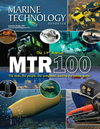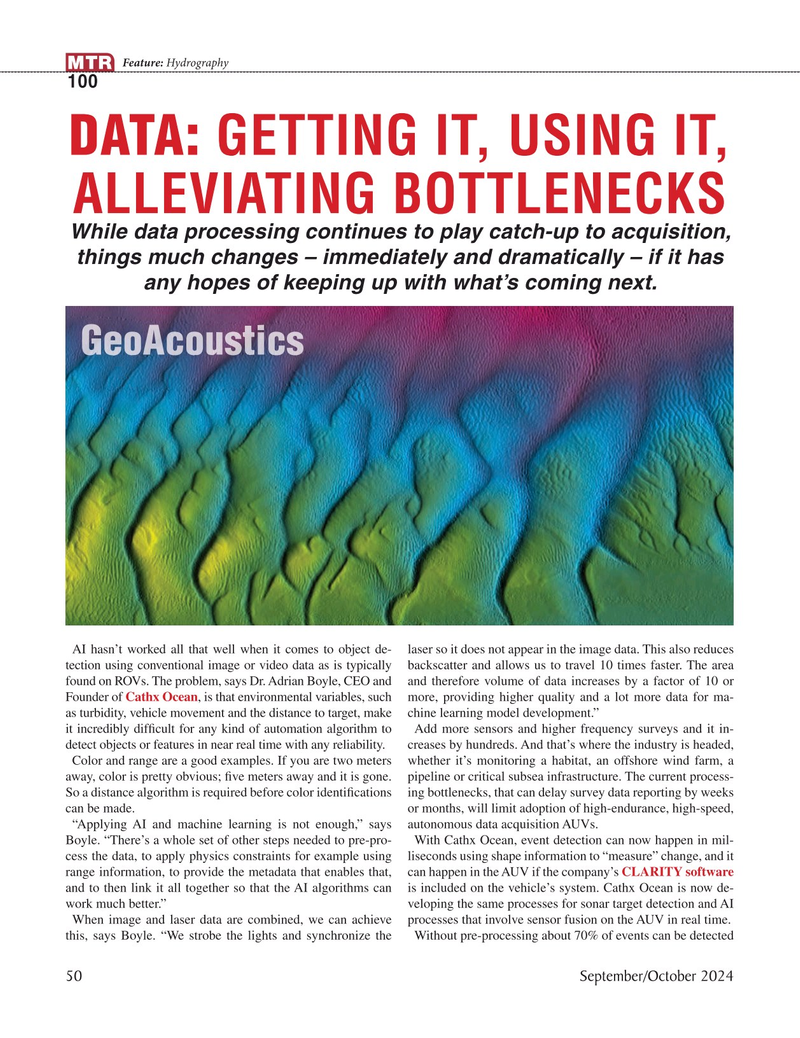
Page 50: of Marine Technology Magazine (September 2024)
Read this page in Pdf, Flash or Html5 edition of September 2024 Marine Technology Magazine
Feature: Hydrography
MTR 100
DATA: GETTING IT, USING IT,
ALLEVIATING BOTTLENECKS
While data processing continues to play catch-up to acquisition, things much changes – immediately and dramatically – if it has any hopes of keeping up with what’s coming next.
AI hasn’t worked all that well when it comes to object de- laser so it does not appear in the image data. This also reduces tection using conventional image or video data as is typically backscatter and allows us to travel 10 times faster. The area found on ROVs. The problem, says Dr. Adrian Boyle, CEO and and therefore volume of data increases by a factor of 10 or
Founder of Cathx Ocean, is that environmental variables, such more, providing higher quality and a lot more data for ma- as turbidity, vehicle movement and the distance to target, make chine learning model development.” it incredibly dif? cult for any kind of automation algorithm to Add more sensors and higher frequency surveys and it in- detect objects or features in near real time with any reliability. creases by hundreds. And that’s where the industry is headed,
Color and range are a good examples. If you are two meters whether it’s monitoring a habitat, an offshore wind farm, a away, color is pretty obvious; ? ve meters away and it is gone. pipeline or critical subsea infrastructure. The current process-
So a distance algorithm is required before color identi? cations ing bottlenecks, that can delay survey data reporting by weeks can be made. or months, will limit adoption of high-endurance, high-speed, “Applying AI and machine learning is not enough,” says autonomous data acquisition AUVs.
Boyle. “There’s a whole set of other steps needed to pre-pro- With Cathx Ocean, event detection can now happen in mil- cess the data, to apply physics constraints for example using liseconds using shape information to “measure” change, and it range information, to provide the metadata that enables that, can happen in the AUV if the company’s CLARITY software and to then link it all together so that the AI algorithms can is included on the vehicle’s system. Cathx Ocean is now de- work much better.” veloping the same processes for sonar target detection and AI
When image and laser data are combined, we can achieve processes that involve sensor fusion on the AUV in real time.
this, says Boyle. “We strobe the lights and synchronize the Without pre-processing about 70% of events can be detected 50 September/October 2024
MTR #7 (50-65).indd 50 10/3/2024 11:50:56 AM

 49
49

 51
51
